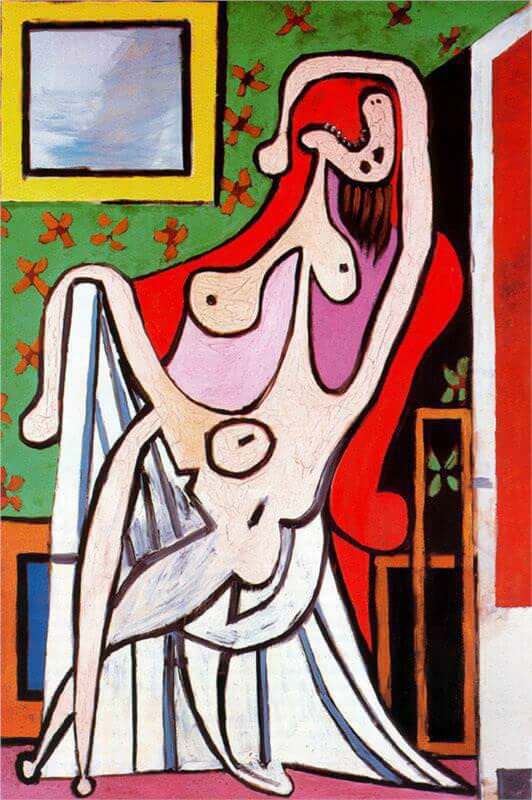Woman In An Armchair, 1929 by Picasso

When Picasso's work came under the influence of the Surrealists in the late 1920s, his forms often took on melting, organic contours. This work was completed in May 1929, around the same time the Surrealists were preoccupied with the way in which ugly and disgusting imagery might provide a route into the unconscious. It was clearly intended to shock, and it may have been influenced by Salvador Dali, Joan Miro. It is thought that the picture represents the former dancer Olga Koklova, whose relationship with Picasso was failing around this time.
For the feminist movement, the reductive invasion of face and body underlines Picasso's continual subjugation of the female image, particularly here, with the displaced vagina as mouth, complete with vicious teeth. Several commentators stress the tension in his marriage to Olga and the developing love affair with 17-year-old model Marie-Therese Walter as negative influences, but this was a deeply sexually charged man, approaching fifty and with all the inherent life-crises this significant age can pose.
The use of color and patterning also mocks the work of Henri Matisse with its imitation of wallpaper design. The red and green polarisation, when juxtaposed with the calm sea outside, heightens the frenzied tension within the room.
















